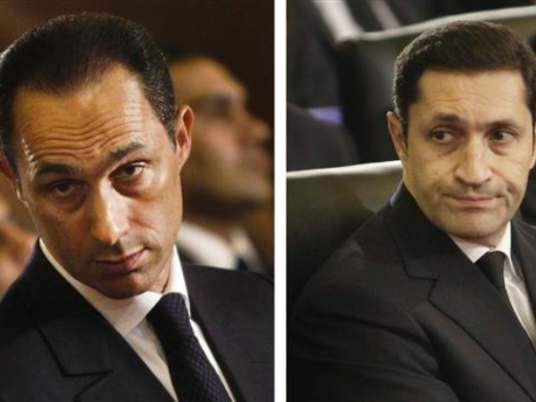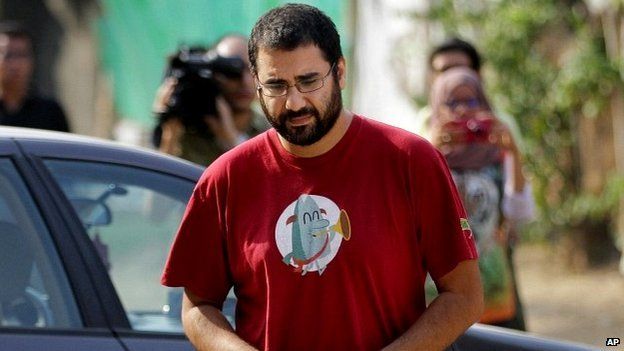It used to be that you couldn’t walk a block in Cairo before coming across some reminder that Hosni Mubarak was in charge and had been for almost 30 years. Since 11 February, the day Mubarak slinked away from his seat with a televised statement read by his vice president, the nation has undergone a massive facelift – in an almost literal sense.
The former president’s printed visage has been torn, scraped, and clawed off of most of the surfaces it previously occupied with a thoroughness that suggests even his mere name or image might have contained contagious corruption. His forehead has repeatedly been scribbled over with insults and allegations, and his family name hastily dropped from the infinite institutions that it had previously been imposed upon. On 21 April, a court ordered the Mubarak name removed from all public institutions.
In the wake of this nationwide upheaval, hospitals, schools, museums and various other institutions have been scrambling to adapt to these sudden changes, simultaneously struggling to determine their new, post-Mubarak identity.
At what had been known for many years as the Hosni Mubarak Experimental School – the sign above its gate now reading "The (blotch of black paint) Experimental School" – the search for a new name worthy of the glory of the revolution, and indicative of the moral renaissance supposedly manifesting as a result of it, has become the primary topic of debate among teachers, students, and parents.
Located in Nasr City, a district in which the landscape is equally dominated by McDonalds, malls and – until recently – Mubarak, the ( ) Experimental School was, according to its assistant principal Magda Mahmoud Hussein, one of the first schools in the country to be notified of the upcoming changes.
“We found out that our name was to be changed by coincidence,” Hussein says. “When the list of voting stations for the recent referendum came out, our school was listed as the Nasr City Experimental School.” Hussein says that, having not received an official notification from the Ministry of Education regarding the name change, the modification took her by surprise.
“I only figured it out when I got to school that day,” she says, smiling.
The ( ) Experimental School has since received an official notice from the ministry, as have the rest of the nation’s schools with names honoring the previous first family. However, in its notice, the ministry failed to provide new names or recommendations for possible choices.
This has frustrated employees of the schools and, as Hussein puts it, created a significant “distraction” from educational pursuits. This was evident to Al-Masry Al-Youm when its questions on the matter led to a brainstorming session that grew to include several staff members, two visiting parents, and a student who had been in trouble and seemed relieved at the sudden diversion.
“I think the Freedom School would be an appropriate name,” one male teacher suggested.
Several other staff members seemed to agree, until Hussein pointed out, “We have enough trouble controlling the students. If we call this place the Freedom School, they’ll never listen to us again.”
Everyone thought this was a good point.
The suggestion for “Tahrir School” was disregarded because “everything is calling itself Tahrir now,” and “Martyrs’ School” for being “too grim” and because the school had not actually lost any students or staff members during the revolution. “Sayeda Aisha,” “Sayeda Khadiga” and “Fatemah al-Zahraa” were also vetoed since many other schools across the country, and especially in Nasr City, share the same names.
“What about ‘The Sound of Freedom?’” a math teacher suggested enthusiastically, only to be immediately shot down by the vice principal. “This is a school, not a radio station,” she said.
After several rounds of suggestions, the administration didn’t seem any closer to settling on a name and the argument soon took on another dimension.
“This name change does not make any sense to me, and I am completely against it,” a frustrated mother huffed. “The man [Mubarak] had a long history, you can’t just erase that.”
“It’s not our choice, madam. This is in accordance to an official decree and court order from the ministry,” explained Vice Principal Hussein.
“Well,” the mother frowned. “The ministry is just jumping on the bandwagon.”
Several of those present in Hussein’s office also voiced their disapproval of the name change; most quickly emphasized they were “loyal to the name, but not the person.”
“The school is already known to its students and the people in the area as the Mubarak School,” a second parent chimed in. “Why add to the confusion?” This last question was met by a response from the clearly agitated Hussein, who claimed that the school’s administration was doing everything in its power to “minimize confusion” and that this was the reason why they had chosen to remove Mubarak’s name from their sign.
However, the school’s groundskeeper, Aam Saad, tells a different story. “The administration didn’t black out Mubarak’s name,” he laughs. “We came back to school after it reopened and found the sign the way it is now.”
“This is the work of revolutionaries,” he says, contemplating the sign. “Or neighborhood vandals.”
When asked if he has a suggestion for the school’s new name, Aam Saad is interrupted by a student who runs past, yelling, “The name will never change, you’ll see.”
“Shut your face, you little cockroach,” Aam Saad retorts, before turning back to Al-Masry Al-Youm and suggesting, “They should call this the Cockroach School.”
Somewhat tellingly, the students’ reactions to the name change seem limited to indifference or mistrust.
“Who cares about the name?” asks Mahmoud Salah, a sophomore. “We only care about real changes – will we have more freedom, will education improve, or will things stay the same?”
“A sign is just a sign, and a name just a name,” says Salah. “The fact that that sign had ‘Mubarak’ written on it before didn’t fool people into thinking he was a great man, it just limited what could be said and done in a place like this, and that’s what really needs to change.”
Superficial or not, the name change has hit Egypt’s institutions like a rash, and in many cases, the Mubarak name has been scratched off.
At the Suzanne Mubarak Science Exploration Center – now shortened on the side of the building to The Suzanne Mub Science Exploration Center – the changes, according to an employee at their press office, will be limited to the name.
“There will be no alterations or updates to the institution other than scheduled renovations and maintenance work,” she claimed. “And the fact that we are now called the Science Exploration Center.”
In many cases, the process of a name change will be limited to just that – simple, quick, and contained. Several hospitals, public squares and institutions have already been successfully reincarnated, with a recent, prominent example being a downtown metro station, which went from “Mubarak” to “Martyrs” in a relatively speedy process. There are other institutions, though, that present a bigger challenge.
At the October War Panorama, which celebrates Egypt’s 1973 war with Israel, the ousted president’s image still occupies a multitude of billboards, murals and displays. His name is mentioned repeatedly throughout the military museum’s exhibitions and newsreels. Cleansing this particular institution of the former dictator presents a unique challenge as, independent from his now-tarnished legacy as the nation’s president, Mubarak also served as the air force commander in the conflict – a key chapter and widely-accepted triumph in Egyptian history.
Despite his initial refusal to speak with Al-Masry Al-Youm, the museum’s supervisor, a member of the Supreme Council of the Armed Forces, eventually revealed a few details on the condition of anonymity.
“Some things will change, others will stay the same,” he explained, adding that “the giant billboard by the entrance, for example, will be gone in a few days’ time. We’ve already requested its removal.”
“It’s certainly difficult,” the supervisor sighed, indicating that the process in this particular institution had not gone smoothly so far. “We are updating the museum, but still debating the best way to do so. There are lines we are trying not to cross, or violate – both with the people and regarding history.”




